Sustainable Solutions for Integrated Management in the U.S. of Invasive Pests from Europe, Asia and Africa
The mission of the European Biological Control Laboratory (EBCL) is to develop classical biological control methodologies as well as strategies to control blood feeding insects and ticks (vectors) to sustainably suppress insect and tick pests originating in Europe, Asia, and Africa. This is in direct response to the pests’ adverse impacts on agriculture, human health, and wildlife in the U.S.
Classical biological control provides sustainable and ecologically compatible management methodologies and is among the highest returns on investment available in integrated pest management (IPM).
By taking advantage of its strategic location in France and Greece, and integrating advances in DNA-based approaches, chemical ecology and in microbiology, EBCL, in collaboration with other ARS labs including the Invasive Insect Biocontrol and Behavior Laboratory, U.S. universities and agencies such as the Animal and Plant Health Inspection Service (APHIS) and non-U.S. partners including the Biotechnology and Biological Control Agency (BBCA) in Italy, engages in foreign exploration for the discovery and evaluation of the most promising natural enemies, before their release as biocontrol agents in the U.S.
Some of the current EBCL pest targets for classical biological control research include:
- Surveying Asian (Pakistan) and African countries (Kenya and South Africa) for potential biological control agents of the Bagrada bug, impacting crucifer-cropping systems in the southeastern U.S., with a major focus on a small wasp that attacks Bagrada bug eggs.
- Targeting two major pests of olive in California, the olive fruit fly and the olive psyllid. After extensive testing, the release of one parasitoid of the olive psyllid by the California Department of Agriculture (CDFA) is awaiting permission while another agent has already been released and established in California and the sequencing of its genome is planned.
- Exploring several areas in Vietnam for natural enemies of the spotted lanternfly (feeds on over 70 plant species, including specialty crops such as grapes, and fruit trees), and the roseau cane scale (causes dieback and thinning of roseau cane in the lower Mississippi River Delta important for protecting areas from erosion and storm related damages).
- Surveying Europe for potential biological control agents of the allium leafminer, an emerging invasive pest in the eastern U.S. attacking a wide range of Allium vegetables species including garlic, onions, scallion, among others, and the viburnum leaf beetle, currently invasive in the northeastern U.S. and Wisconsin where it defoliates native and ornamental viburnum plants. Research on the viburnum leaf beetle focuses on native potential natural enemies such as mites and a small wasp that attack the eggs.
- Designing novel control technologies to effectively control disease vectors such as ticks and mosquitoes. This includes a biological control approach identifying natural enemies (mostly in Vietnam) of the Asian longhorned tick, and the southern cattle tick or cattle fever tick (known to transmit severe cattle diseases such as babesiosis and anaplasmosis).
In addition, scientists are also developing novel surveillance and control technologies, and trapping systems for mosquitoes including:
- Development of a lethal mosquito trap (DDALO).
- First surveillance systems for West Nile Virus (WNV).
- First aerial ultra-low volume mosquito insecticide applications in Europe to combat WNV outbreaks
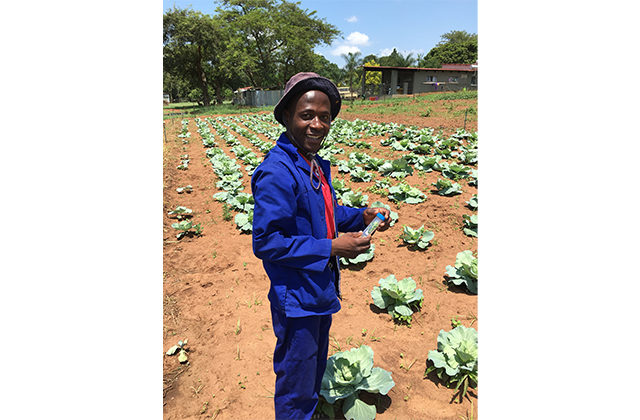
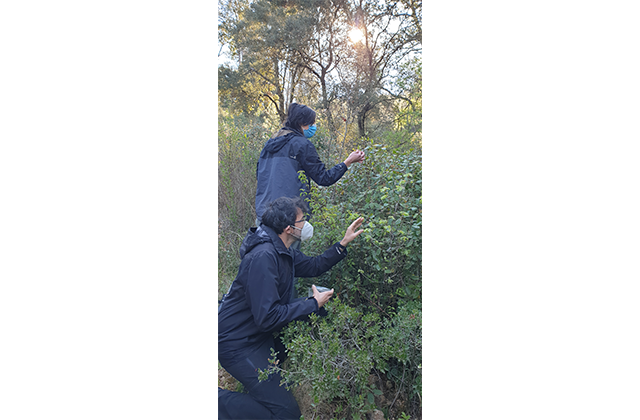
DNA barcoding to help insect and tick species identification
DNA barcoding is currently applied by EBCL scientists to improve identification of insect and tick pests, vectors and natural enemies discovered during foreign exploration in Europe, Asia, and Africa and field surveys in the U.S. As part of field surveys of native parasitoids of Bagrada bug in California, conducted by researchers at the University of California Riverside, DNA barcodes of the parasitoids attacking the eggs of this pest were obtained and compared to all publicly available sequences, Florida Department of Agriculture, and EBCL databases. This collaborative effort identified at least four species of Trissolcus (a genus of parasitoid wasps) are actively parasitizing Bagrada eggs in southern California.
Developing smart precision technologies against disease spreading vectors
Mosquitoes, ticks, sand flies, and other blood feeding arthropods (vectors) pose a significant risk to billions of people globally due to their capacity to spread life-threatening diseases resulting in more than 700,000 deaths annually. In the U.S., 650,000 cases of vector-borne diseases were recorded between 2014-2016 attributed mostly to ticks and mosquitoes. In the absence of effective vaccines, vector control remains the primary line of defense.
EBCL scientists are dedicated to the development of novel technologies for more effective, safer, and sustainable vector control. Beginning in 2020, EBCL joined forces with public health agencies and vector control professionals to test new DNA-based diagnostic methods designed to increase the sensitivity and precision of tick and sand fly surveillance. In addition, unmanned aerial vehicle spray technology (such as drones) is being optimized under field conditions for controlling pathogen-transmitting mosquitoes and sand flies. Integration of smart precision technologies in the currently available vector control toolbox will enable vector control authorities across the world to detect and respond to public health risks more efficiently.
Using chemical ecology in biological control research
In the context of biological control against insect pests, chemical ecology research can investigate topics such as: 1) The identification of chemical compounds used by the target pest to orient itself in the field. Such information can lead to a greater understanding of the preferences and dispersal patterns of the pest in its invasive range; 2) Understanding how natural enemies use chemical compounds to locate the target pest. Highly specialized natural enemies (such as some parasitoid wasps) tend to respond to very specific chemical cues such as the pheromones of their host. Knowing the olfactory preferences of natural enemies can help evaluate their potential as candidate biocontrol agents; 3) Development of attractive lures/baits for monitoring or mass-trapping the target pest in its invasive range.
For weed biocontrol, chemical ecology research can investigate the following: 1) Chemical characterization of the target weed and its populations; 2) Comparison of the chemistry of the target weed and native plants present in the invasive range. This approach can shed light on understanding/predicting the host range of potential biocontrol agents and by extension improve ecological risk assessments; 3) Study of the foraging preferences of potential biocontrol agents. This approach may help targeting specific populations of biocontrol agents, improve release methods in the field, and provide valuable information for ecological risk assessment and 4) Exploring the evolution of plant chemistry of target weeds post-invasion.
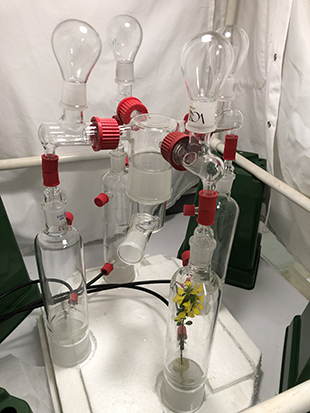
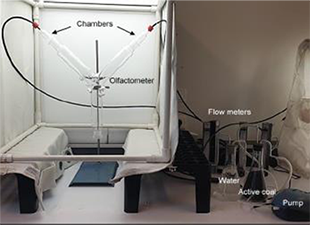
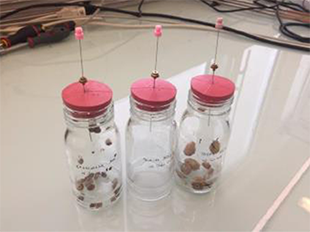
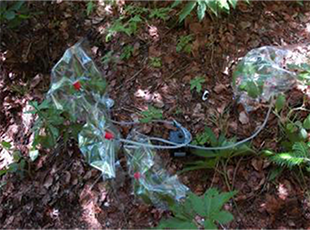
Authors: Marie-Claude Bon, Alexandra Chaskopoulou, Gaylord Desurmont, Javid Kashefi, Mélanie Tannières, and René Sforza
Contact: Michael Grodowitz, michael.grodowitz@usda.gov
The European Biological Control Laboratory (EBCL) was established in 1991 near Montpellier, France. EBCL was created by the merger of the former European Parasite Laboratory, established in Paris in 1919, and the Biological Control of Weeds Laboratory in Rome. EBCL has a satellite laboratory in Thessaloniki, Greece. As the only USDA ARS-operated laboratory outside the United States, EBCL develops biological control technologies which can be used to suppress invading weeds and insect pests of Eurasian origin. EBCL researchers do this by searching for natural enemies (insects, mites, and pathogens) in their native habitat, determining their identity, testing their host specificity and potential impact in laboratory and field experiments, and shipping promising organisms to the U.S. for further testing as biological control agents. EBCL collaborates with scientists in many countries in Europe, Asia, and Africa to explore in regions of origin of the target weeds and insects.

